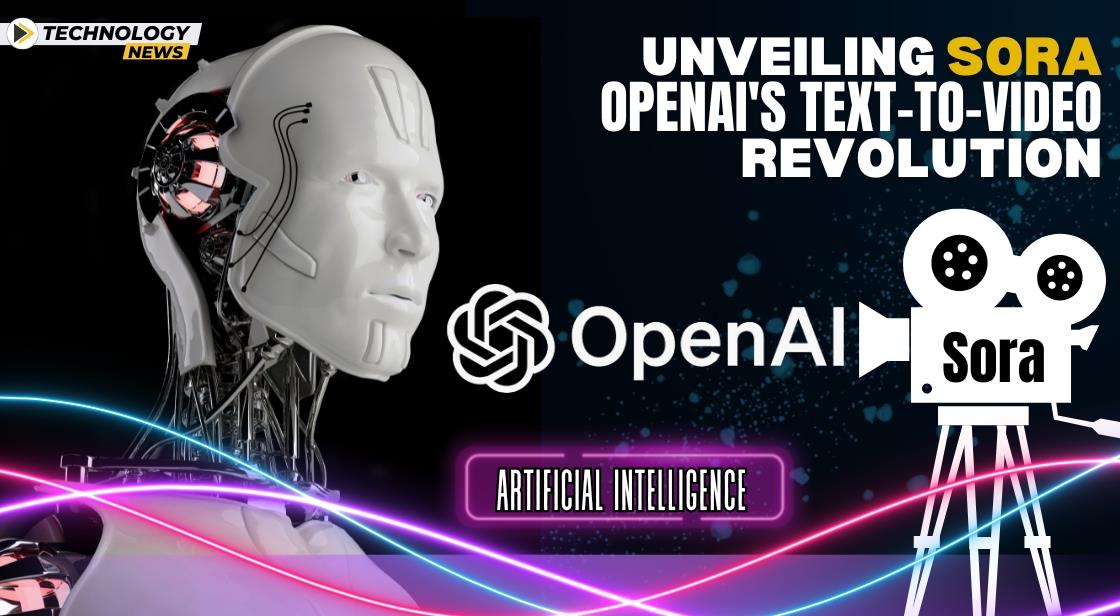Unveiling Sora: OpenAI's Groundbreaking Text-to-Video Model Revolutionizing AI

News Synopsis
OpenAI, backed by Microsoft, introduces Sora, a revolutionary text-to-video model, showcasing the organization's commitment to staying at the forefront of artificial intelligence (AI) advancements. This innovative technology aims to redefine the landscape where text-to-video tools are gaining prominence.
Decoding Sora:
Sora, derived from the Japanese word for sky, is a text-to-video diffusion model designed to generate lifelike videos lasting up to 60 seconds. Capable of creating intricate scenes, dynamic camera movements, and characters with vivid emotions, Sora sets a new standard in AI-generated content. OpenAI emphasizes that Sora can transform still images or existing footage into realistic videos, simulating the physical world in motion.
Accessing Sora:
While the announcement of the text-to-video model was made on February 15, access to Sora remains limited, with the technology currently undergoing the red-teaming phase. This practice involves subjecting the model to real-world simulations by a team of experts to identify vulnerabilities and weaknesses.
User Feedback and Demos:
OpenAI is collaborating with visual artists, designers, and filmmakers to gather valuable feedback for further advancements. Although most users must wait, the company has shared insightful demos in its blog post, providing a glimpse of Sora's capabilities. OpenAI's CEO encourages creative professionals to contribute to refining the model.
What is Sora and How Does it Work?
Imagine starting with a static image on a TV screen and gradually removing the fuzziness until you see a clear, moving video. That's essentially what Sora does. It utilizes a specialized program based on "transformer architecture" to progressively remove noise and create videos. Unlike most video generation models that work frame by frame, Sora can generate entire videos at once.
Users can guide the content of the video by providing text descriptions. Think of it as a GPT model for video, where text prompts influence the generated output. Sora breaks down videos into smaller pieces called patches and progressively refines them based on the provided text instructions.
Building on Previous Innovations:
OpenAI describes Sora as an evolution of its earlier projects, DALL-E and GPT models. It leverages the "recaptioning technique" from DALL-E 3, which involves generating detailed captions for the training data. This allows Sora to better understand and follow user prompts within the generated video.
Important Note: While the company shares its excitement about Sora's potential, they acknowledge current limitations. The model still has challenges in accurately simulating complex physics and may struggle with specific cause-and-effect relationships. Additionally, precise descriptions of events unfolding over time, like camera movements, could pose difficulties.
Potential Applications and Ethical Considerations
Sora's ability to generate realistic videos from text opens up a range of exciting possibilities:
-
Filmmaking & Animation: Creating storyboards, visualizing concepts, and generating quick prototypes could become significantly faster and easier.
-
Marketing & Advertising: Crafting engaging video content for various campaigns might be revolutionized by this user-friendly tool.
-
Education & Training: Interactive learning experiences with simulations and personalized scenarios could be readily developed.
-
Accessibility & Communication: Making video content more accessible by automatically adding captions or translating languages could have a significant impact.
However, the ethical implications of such powerful technology require careful consideration:
-
Misinformation & Deepfakes: The potential for creating realistic, yet fabricated videos raises concerns about spreading misinformation and manipulating public perception.
-
Bias & Discrimination: Ensuring the model is trained on diverse datasets and avoids perpetuating societal biases is crucial.
-
Creative Ownership & Copyright: Questions surrounding who owns the rights to content generated by AI tools need to be addressed.
Addressing Sora's Weaknesses:
OpenAI acknowledges that Sora, like any cutting-edge technology, has its "weaknesses." Challenges include accurately simulating complex physics scenes and potential misunderstandings of cause and effect instances. The model may face spatial confusion and struggle with precise descriptions of events unfolding over time.
Looking Forward:
While Sora represents a significant leap in AI capabilities, it is vital to recognize its ongoing evolution. OpenAI remains committed to refining the model, addressing weaknesses, and incorporating user feedback. As Sora continues to advance, it is poised to redefine the possibilities of text-to-video AI models.
In conclusion, OpenAI's Sora emerges as a groundbreaking innovation, pushing the boundaries of AI with its text-to-video capabilities. The red-teaming phase, user feedback, and ongoing advancements position Sora as a pivotal player in shaping the future of AI-generated content.
You May Like









